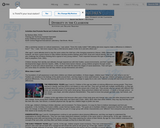
For this activity, students develop social skills and become more group-oriented by exploring the culture of their friends.
- Subject:
- Social Studies
- Material Type:
- Activity/Lab
- Provider:
- PBS
- Date Added:
- 04/26/2017

For this activity, students develop social skills and become more group-oriented by exploring the culture of their friends.

Each student will create a book about themselves using the book template. They will identify how people are similar and different.
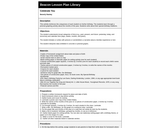
In this lesson, students will participate in a class activity to observe their similarities and differences using the common theme of birthday celebrations. Students and their families will fill out a brief homework questionnaire about their family birthday traditions to be shared with the class. A reproducible copy of the questionnaire is included in the lesson. Students will also create a class graph of birthday months and write/draw a page for a class book about birthday celebrations.

Students learn about what makes a celebration. They brainstorm celebrations they have experienced and classify them into categories. Students focus on national holidays and learn about two holidays celebrated in our national community: Veterans Day and Independence Day.
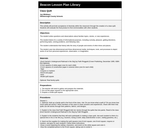
In this lesson, students compare the similarities and differences between themselves and their classmates by helping to create a class quilt. Each student will contribute a square of the quilt by drawing a picture of an important event or special time in their lives. Each student will have a turn to describe their square, then the class will examine and discuss the quilt together. The class idscussion will highlight the similarities and differences among classmates' squares.
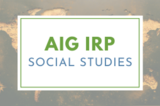
After reading books about diversity in people (ethnicity, interests, culture, dress, language, physical, etc.), the teacher will lead a discussion about how any two people are alike in some ways and different in others. After the class has worked on this concept, all students will use a Venn Diagram or other compare/contrast graphic organizer to compare themselves to one other person in the group. Then higher level students will extend their thinking by getting into groups of 3 and creating a triple Venn Diagram to compare/contrast themselves with 2 other students. After that they will write a few sentences about how their two classmates and they are different and alike. They will use the triple Venn Diagram to help them with their writing. This lesson was developed by NCDPI as part of the Academically and/or Intellectually Gifted Instructional Resources Project. This lesson plan has been vetted at the state level for standards alignment, AIG focus, and content accuracy.
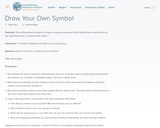
In this activity, students begin to explore questions of self-identify and determine what they have in common with others.

Students will understand how their families are similar and different in respect to kinship, laws, and religion, as well as the music they enjoy, the clothing they wear, and the food they eat.

Students gain an understanding that families have similarities and differences and that members of families share the customs and traditions unique to their family.

Students explore the customs and traditions celebrated in their own homes, as well as interview invited guests to learn about other customs and traditions.

In this lesson, students will learn about birthdays around the world. Students will listen and learn about the diversity of people, food, games and birthday traditions globally. This lesson was developed by LaToya Dawson as part of their completion of the North Carolina Global Educator Digital Badge program. This lesson plan has been vetted at the local and state level for standards alignment, Global Education focus, and content accuracy.

Students will learn to recognize how others celebrate their birthdays around the world. Students will embrace and explore the feelings of others as well as their own feelings as they learn about the differences in how people celebrate birthdays. This lesson was developed by Leslie Montgomery as part of their completion of the North Carolina Global Educator Digital Badge program. This lesson plan has been vetted at the local and state level for standards alignment, Global Education focus, and content accuracy.

This lesson reviews what the students have learned throughout this unit. During this lesson, the students have the opportunity to take action by writing and drawing in their journals to reflect on what they have learned about birthday celebrations around the world. The final part of this unit is for the students to share their work with the class to give their perspectives on different traditions around the world. This lesson was developed by Leslie Montgomery as part of their completion of the North Carolina Global Educator Digital Badge program. This lesson plan has been vetted at the local and state level for standards alignment, Global Education focus, and content accuracy.

Students will take action for our unit on needs and wants by starting a can food drive for our local food pantry. The students will do jobs/chores at home to earn the can food they bring in to donate.This lesson was developed by Michelle Allen as part of their completion of the North Carolina Global Educator Digital Badge program. This lesson plan has been vetted at the local and state level for standards alignment, Global Education focus, and content accuracy.
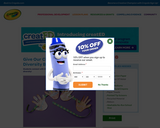
In this activity, students consider how they are similar to and different from their classmates. Then students will decorate a handprint with words or phrases that describe them. The teacher will then glue each student's hand on a long ribbon for display in the classroom or school.

In this lesson, students gain an understanding that families have similarities and differences and that members of families share the customs and traditions unique to their family.
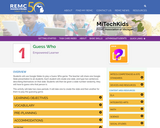
Students will use Google Slides to play a Guess Who game. The teacher will share one Google Slide presentation to all students. Each student will create one slide, and type two sentences describing themselves on that slide. Students will then be given a slide number randomly, they will have to guess who that person is.

In this lesson, students learn how to say hello in five different languages.

This inquiry engages students in expanding their understandings of families in general and the idea that families can be both similar and different. Although much of family life may be shared - language, religion, culture, and traditions - there are important differences across these elements. The compelling question "How can families be the same and different?" offers students opportunities to explore a range of family dimensions - structure, activities, and traditions.

This kindergarten inquiry leads students through an investigation of self by recognizing that all humans have both unique and similar characteristics. By investigating the compelling question “Is everyone unique?†students begin to see how they are similar to and different from their classmates. The study of similarities and differences among individuals provides the foundation for students to demonstrate their understanding of and respect for others.